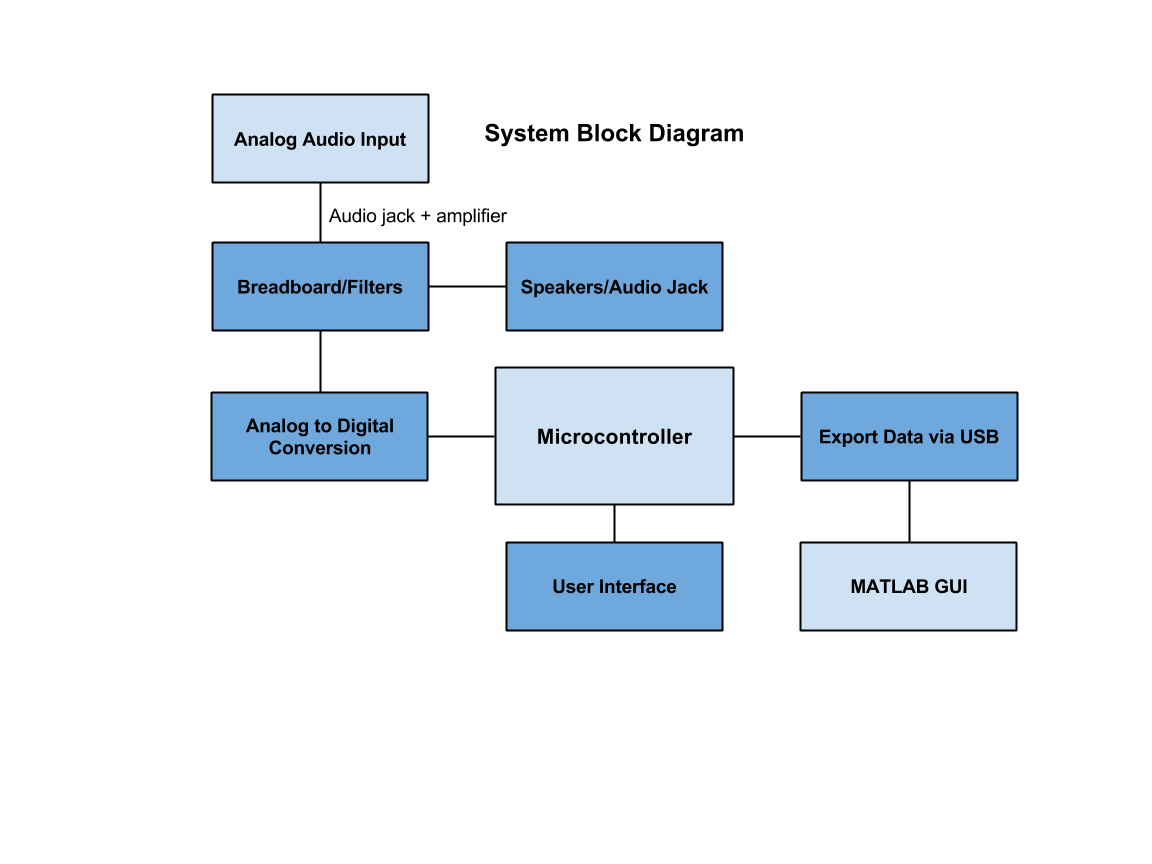High Level Design
View PDFIntroduction
There is an effort in the College of Engineering to improve the freshman engineering course (EE 10111-10112) and make the course more interesting and educational. One of the problems relevant to EE senior design is that there is not an adequate introduction to the fun side of electrical engineering that teaches fundamental concepts of what electrical engineers do.
Problem Statement and Proposed Solution
Our goal is to create an engaging module for the freshman engineering course representative of the different applications of EE in the real world. There is presently little exposure to EE concepts in the freshman course. In addition to emphasizing civil engineering, computer science, and robotics, the freshman course should contain a module that focuses on circuits and signal processing, clearly expresses what EE entails, and sparks interest in the field among the freshmen. The concepts fundamental to EE are also transferrable skills among different engineering disciplines, such as familiarity with microcontrollers, filters, and circuits.
The proposed solution is a new EE learning module, using an EE Toolbox that will contain components to allow students to gain an introduction to the different aspects of EE. The Toolbox will be an interactive learning environment designed to cover the basics of the Learning Objectives (listed below). In order to achieve these learning objectives, the Toolbox will contain many components, also listed below.
- Learning objectives
- basic signal processing: waveforms, waveform synthesis, basic signal analysis in time/frequency domains. Students would have the ability to input a waveform (audio signal) through the audio jack or signal generator and have the software process it digitally using preprogrammed digital filters.
- RC circuits and software digital equivalents: The signal can be passed through the breadboard, using predesigned or student-initiated circuits.
- Components
- Breadboard/circuit components/sensors
- Signal generator
- Display (LEDs, screen)
- Audio I/O
System Requirements
- Power
- USB power
- button or switch
- User interface
- input
- buttons to select options
- output
- plot graphs of signals
- toggle between time and frequency domains
- Breadboard
- Able to accept an input signal from the microcontroller
- Prebuilt circuitry
- Hardware plugins consisting of prebuilt circuits for students to put on the breadboard and connect to their simpler circuits
- Needs to be compatible with the breadboard and easy to use
- Audio I/O
- Audio jack
- Speakers
- amplifier
- Volume control
- Casing
- Toolbox, clear and pretty, size of a large laptop
- LEDs
- Containers for basic circuitry/removable components
- Fold closed, like a laptop
- Intelligence
- Accept analog signals
- Signal processing software
- Buttons for navigation
System Block Diagram
Overall System

Subsystem and Interface Requirements
- Power: USB
- USB plug, either into a computer or into the wall using a USB adaptor
- External hardware plugins
- Filters
- Amplifiers
- ADC/DAC
- Data output
- Plot graphs of inputs and/or outputs
- Select time vs. frequency domains
- Speaker
- Need a control amplifier
- Audio jack
- Takes in a signal
- Send to ADC in microcontroller
- Software
- Signal processing software
- FFT function
- Plotting functions
Future Enhancement Requirements
- Additional capability for signal generation: sawtooth and square waves
- USB plugin
- Saving output plots
- Possibly for plugging in a laptop for extended functionality.
- Programmability (via the keyboard or Pickit3)
- Cabinet for charging a set of Toolboxes, potentially wireless charging
High Level Design Decisions
User interface: buttons as inputs (as opposed to toggles or switches)
Building our own amplifiers (as opposed to buying one)
Using an external sinusoid generator, which entails having an external circuit board that connects to the board we design (exact part number TBD)
Open Questions
Part numbers: signal generator, LCD screens, audio jack, speakers, rechargeable battery, wall plug and adaptor
Number and color of LEDs
Casing materials
Exact design of adaptors for audio components
Major Component Costs
Sinusoid generator ~$10
Power supplies ~$50
Audio components ~$25
Breadboard and circuit components ~$10
Casing materials ~$10-100
Conclusions
This project has the potential to have a lasting impact on the engineering department at Notre Dame. The subcomponents of the project provide expandability in terms of external hardware plugins and pursuing future enhancements. The subcomponents are diverse in their purpose and implementation, which will draw on knowledge of both devices and signal processing.